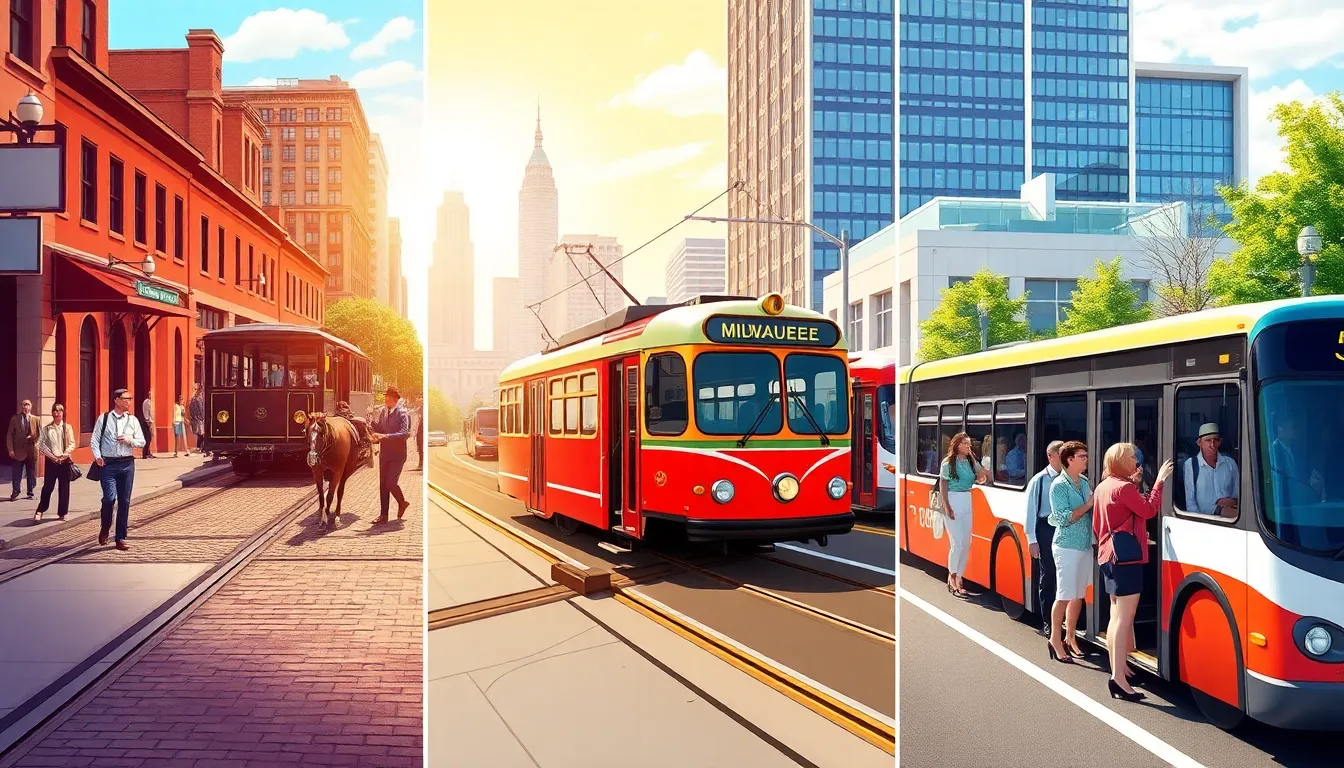Ah, Milwaukee. Famous for its beer, cheese, and that incredible lakefront. But even more than those attractions, there’s a bustling public transit system waiting to be explored. Ever wondered how many different ways you can navigate this city without very costly? You’re in the right place. In this guide, we investigate into the ins and outs of Milwaukee Public Transit. So, buckle up and grab your favorite snack as we embark on this enlightening ride, one that’s rich in history, detail, and, of course, a good dose of humor.
Table of Contents
ToggleHistory of Milwaukee Public Transit

Milwaukee’s public transit has quite the history, dating back to the horse-drawn streetcars of the late 19th century. That’s right, before we had sleek buses and trains, you could hop on a carriage pulled by horses. Fast forward a little, and you’ll find that by the 1930s, Milwaukee had moved on to electric streetcars. This innovation allowed Milwaukeans to travel further and faster, effectively bringing the city closer together.
The mid-20th century saw changes as buses began to replace streetcars, marking a shift in the public transport landscape. While many cities across the U.S. were increasingly relying on cars, Milwaukee remained loyal to its transit roots, maintaining a robust system to serve its communities. Today, historical remnants can still be observed as the city embraces modern solutions while paying homage to its past.
Current Public Transit System in Milwaukee
Today, Milwaukee boasts a comprehensive and well-organized public transit system that reflects both its rich history and modern needs. The system is designed to meet the diverse needs of its commuters, whether they’re heading to work, school, or simply exploring the city.
Types of Transit Options Available
Commuters can choose from a variety of transit options to find the one that best suits their needs. From buses to rideshares, Milwaukee has it all.
Buses
The Milwaukee County Transit System operates the bulk of the bus services in the area. With routes that cover more than 80% of the city, these buses are often the go-to option for residents and visitors alike. Equipped with free Wi-Fi, these buses make your commute more enjoyable, letting you catch up on your favorite shows on the go, or perhaps those new cat videos that you’ve been dying to watch.
Trains
Rapid transit services are also on the horizon. The Milwaukee Streetcar, affectionately known as “The Hop,” began operations in 2018, providing a charming way to travel through the downtown area. With its easy access to key neighborhoods, it’s perfect for tourists wanting to explore without the hassle of parking.
Taxis and Rideshares
Looking for something more personal? Milwaukee has several taxi services and rideshare apps like Uber and Lyft that offer convenience. Whether you’re heading out for a night on the town or need a lift after a long day, these options provide an excellent complement to public transit.
Accessibility and Services
Milwaukee’s public transit system prioritizes accessibility, ensuring that everyone can navigate the city with ease. Many bus routes are equipped with low-floor designs, making boarding simple for those with mobility challenges. Assistance is available, and transit staff receive training to help those who require additional support.
Also, the city is working hard to expand services that cater to people with disabilities. The Milwaukee Paratransit service specifically assists individuals needing door-to-door transportation, ensuring they remain connected to community events, healthcare services, and job opportunities.
Also, informational resources are readily available. The Milwaukee County Transit System has an excellent website where users can plan their trip, view real-time updates, and check the status of their preferred routes. Public transportation apps are also in abundance to help travelers stay informed.
Economic Impact of Public Transit in Milwaukee
Public transit isn’t just about getting from point A to point B: it plays a crucial role in driving economic growth. Studies show that for every dollar invested in public transit, a city sees a substantial return on investment. In Milwaukee, investing in public transport has led to higher property values and increased accessibility to jobs.
Job accessibility is vital for residents. A reliable transit system connects people in underserved neighborhoods to employment opportunities throughout the city. Besides, businesses flourish when customers can easily access their locations. Many local businesses have thrived thanks to the proximity of transit routes, keeping the local economy buzzing.
Challenges Facing Milwaukee Public Transit
Even though its many strengths, Milwaukee’s public transit system faces challenges that demand attention. Funding remains a critical issue, with fluctuating budgets impacting service levels and expansions. Reports suggest that the city often struggles to maintain operational funding, which can lead to service cuts and aging infrastructure.
Also, while ridership has seen a resurgence since the pandemic, the public transit system continuously contends with competition from rideshare services and personal vehicle use. Encouraging more residents to choose public transit over driving will require innovative marketing strategies and possibly adjustments to service models that cater to changing commute patterns.
